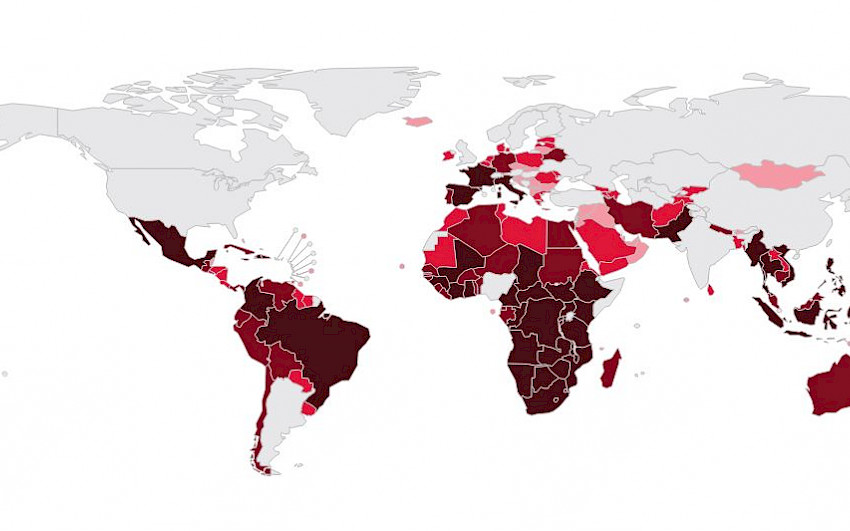Statistics on HIV/AIDS
The epidemiology of HIV/AIDS in Switzerland and globally
Switzerland
In 2020, there was a further decline in the number of HIV diagnoses reported to the Federal Office of Public Health (FOPH). For the first time since the beginning of the HIV epidemic in the early 1980s, fewer than 300 cases were reported to the FOPH, namely 290. In the 1990s, the average number of cases per year was 1300. An increased testing regime, particularly of exposed groups, ever-earlier treatment and pre-exposure prophylaxis (PrEP) seem to have triggered a trend reversal.
According to recent estimates, around 17,300 people are living with HIV in Switzerland.
As of October 2023, 261 people have been infected with HIV since the beginning of the year. (as of 16.10.23). Compared to the 274 new infections in October 2022, this represents a slight decrease (as at 18.10.22).
93 per cent of all people living in Switzerland have been diagnosed with HIV and were therefore aware of their infection (as of 2021).
96 per cent of those diagnosed with HIV received HIV treatment with medication (as of 2021).
According to the FOPH, 97 percent of those receiving HIV treatment had a viral load below the detection limit of 50 copies per millilitre (as of 2021).
According to the WHO, the HI virus can practically no longer be transmitted sexually at a viral load of less than 1000 copies per millilitre.
Source: Federal Office of Public Health, date of issue November 2022 et WHO
Worldwide

39 million people worldwide are living with HIV (as of 2022).
Around 30 million people with HIV have access to antiretroviral therapy, compared to well under 10 million people in 2010.
In 2022, 1.3 million people were infected with HIV.
630,000 people died of AIDS in 2022, compared to around 1 million people in 2016.
Data by UNAIDS November 2023
